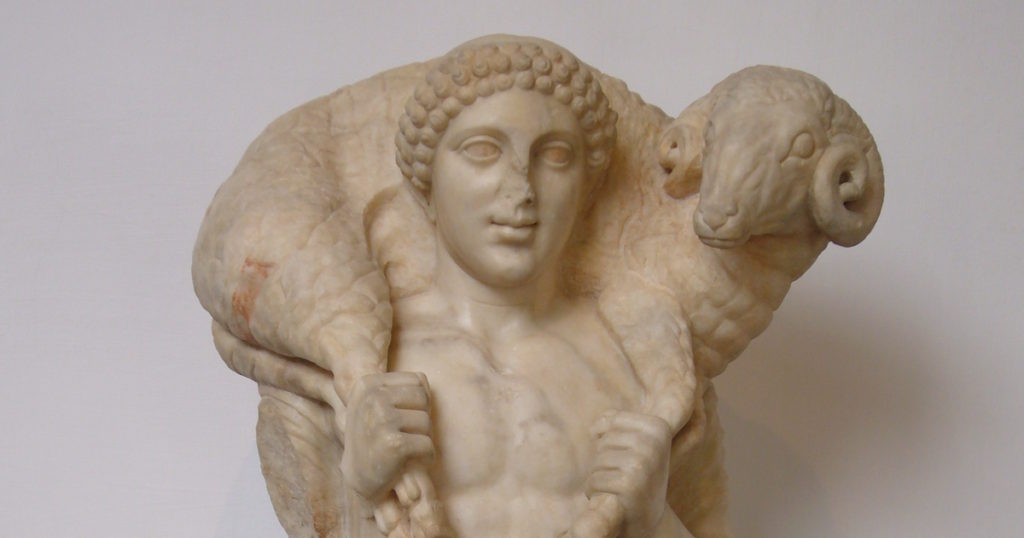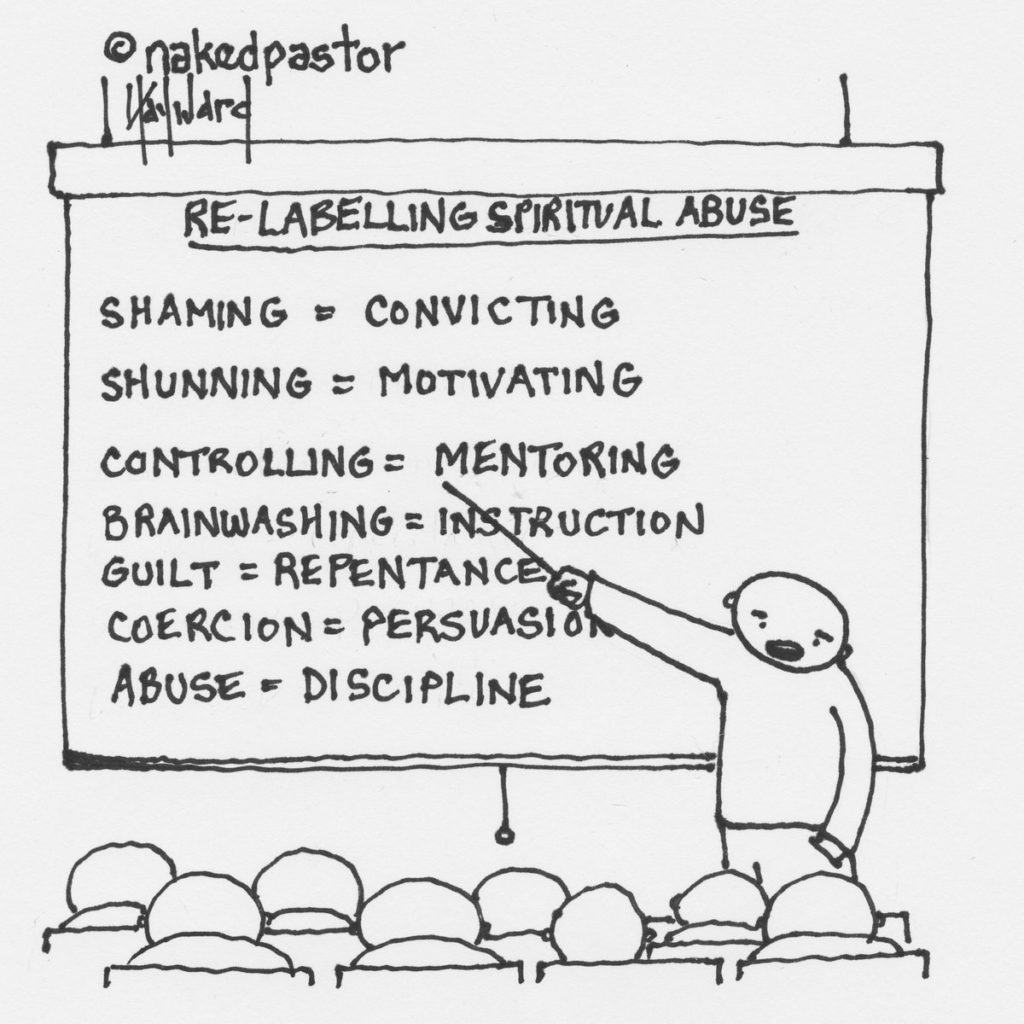A farewell sermon preached in Oxford on May 14th 2022 by
The Very Revd. Professor Martyn Percy, Dean of Christ Church (2014-2022)

Readings: Psalm 80; 1 Samuel 16: 1-13; Matthew 7: 19-27
Personal Note: Today we begin with an enormous thank you to all those who have, over the past four plus-years have been so kind, caring and supportive towards Emma and me. We want to thank everyone for coming and being here today, and to thank those who wanted to be amongst us, yet could not be. In the course of this lengthy ordeal – which at times has felt gruelling – I can only say that we have felt sustained by prayer and love like never before. This care has also been material. We have received several thousand messages, cards and letters of kind support from all over the world, representing not just friendships, but also deep connections with the wider world, universities at home and abroad, and people and places near and far. There have been phone calls, flowers, meals, many cakes, and reassuring hugs. ‘Thank you’ does not even begin to express our gratitude. It never can.
I want to especially thank – on behalf of us all – our staff at the Deanery: Kim, Tina, Jess, Rachel and Maggie – who will have welcomed you and thousands of others over the past eight years to Christ Church for suppers, receptions, teas, coffees, more coffees, mulled wine…other events, and more coffee. Between them, they have notched up over 65 years of combined service, and we owe them an enormous debt of gratitude for all of their unfailingly professional, cheerful, diligent, resilient and caring service. Thank you.
I also want to take this opportunity to thank some others too. This could be a long list, but let me just thank the Rector of Exeter for his kindness and care in lending in using the Chapel today, and to Andrew the Chaplain, the Choir, and all who have made this possible. I also want to especially thank Deborah, Alan, Paul, Matt, Karen, Iain, Erica, Tom, Henry, Jonathan, Linda, Suzanne, Martin, Angela, Robin, Elizabeth, Andrew, Catherine, Sarah, Sean, Rosie, Peter, Corinne, Colin, Frances, David, Nigel and many others, who for various reasons, preferred not to be named. I also especially want to express gratitude for those here today representing an extraordinary network of survivors and victims of abuse within the church, who are exemplars of such care, courage and compassion in the face of their own sufferings and trauma, and yet have continued to model the most extraordinary resilience and hope to so many in their ongoing campaigns for justice and truth to reform a broken church in a needy world.
Last, but not least, the nucleus of the sustaining beloved community has been Emma and our sons, who have had to bear all things, and hope for better. That they have done this with such fierce, determined and persistent love and care is part of the lightness of being that is sometimes hard to even hold, let alone comprehend. Such care and support bears testimony to some of the deep truths that we hold dear in common: that the light shines in the darkness, and the darkness does not overcome. That love, hope, faith and charity are hard to extinguish, and persist. And in all this, I have been mindful – as has Emma – of our enduring bonds of affection and gratitude with the congregations of the cathedral, colleagues, hundreds of staff and volunteers, students and alumni. You will always be in our prayers, and remembered with abiding gratefulness.
Sermon: Sometimes we choose the readings for a sermon, and sometimes they choose us. St. Matthias is the Apostle who replaced Judas, and was chosen by means of lottery to take the number of disciples back up to twelve. But before we talk about Matthias, we need a word about the two deaths we remember from Holy Week. Noting that on Good Friday and after the death of Jesus, all the disciples dispersed and ran away, one modern poet, Norma Farber (‘Compassion’) asks where we might find Mary, the mother of Jesus on that day?
In Mary’s house the mourners gather.
Sorrow pierces them like a nail.
Where’s Mary herself meanwhile?
Gone to comfort Judas’s mother.
As the mystics say, you cannot find Jesus in Heaven on Good Friday because he’s gone looking for Judas in Hell. Jesus won’t go home without him. So Judas is the permanent-resident elephant in the room for St. Matthias’ Day. Judas casts a shadow over these readings, and so we cannot ignore him.
Judas is a betrayer. In Dante’s Inferno, Judas occupies a podium finish with Brutus and Cassius in the inner, ninth ring of hell. These arch-betrayers of classical antiquity represent treachery. Judas remains a relevant figure today. Everyone will have some taste of treachery; of being the victim of others bearing false witness; of being snared; of being badly let down by someone you had trusted. You have had that experience. You’ve known others who have had that experience. I too have had that experience.
When you think about it, there is quite a bit of gambling going on in the bible. Pilate offers the crowd baying for blood a 50-50 choice – do you want Jesus, or Barabbas? Even though it is a 50-50 ‘ask the audience’ eliminator, the odds, we sense, are already firmly stacked against Jesus. Before he is crucified, Jesus is blindfolded and invited to guess who struck him. It is a kind of cruel wager, in which all odds are stacked against the victim. We all know what it is like to see the person who might strike you, but we are left befuddled when it is a shadowy group, committee or process. At the end of the gospels, the soldiers draw lots for Jesus’ clothes. So at the foot of the cross, the executioners and guards play dice before God.
But there are other odds too. What are the odds of a small Jewish sect becoming the world’s largest faith? No-one took a punt at Ladbrokes on that one in AD33. What were the odds that a key member of the disciple’s team, and the treasurer no less, would lose his place to an unknown man named Matthias – the disciple chosen to replace Judas, and chosen by lottery. Two names put before the panel to consider, but only one is chosen emerges as the preferred candidate…
Let’s talk about Matthias. I like the story of Matthias, because it shows, for starters, that the first Christians were actually quite Anglican. That is to say, they knew the value of being pragmatic, and could put it before principle when needed. I suppose the better thing to do with Judas’ successor was to go into a lock-down conclave, and emerge only when ready. But time is short; there is a mission to get on with. They need a twelfth apostle – preferably before supper and sunset – and so they draw lots. It’s a gamble. Yet it seems to pay off.
But there is a deeper theme at work in the manner of Matthias’s selection that is reflected in both the Old and the New Testament readings, and it is this: we are all dispensable. Matthias is Patron Saint of ‘It Doesn’t All Depend on You’. Judas is airbrushed out of history, and now an unknown runner called Matthias reminds us that God is not lacking on the supply-side for people to work with, provided they are committed to joy, gratitude and true service. Be that person.
Because God does know a thing or two about the odds of his purpose being worked out. And I would not bet against the outcome. God does not ask us to gamble. Merely to remember that there are no reliable odds on how your future will turn out. But the God of the present – and of the future – will not let you down. So we do not need to live as others might, because the “citizenship of heaven”, as Paul calls it, will see that we are in the end, held and cherished by a God who will not let us fall.
I think Matthias might have agreed with Woody Allen: “If you want to make God laugh, tell him your future plans”. Most people know the so-called ‘Serenity Prayer’ – or at least the first part of it. Very few, however, know that the original was written by Reinhold Niebuhr in the darkest days of the Second World War. The prayer goes like this: “God, grant me grace to accept with serenity, the things that cannot be changed; courage to change the things which should be changed; and the wisdom to know the difference…”
But the prayer then continues: “…living one day at a time, enjoying one moment at a time, accepting hardship as a pathway to peace; and taking, as Jesus did, this sinful world as it is. Not as I would have it, but trusting that you will make all things right, if I but surrender to your will. So that I may be reasonably happy in this life; and supremely happy with you forever, in the next…”. Many soldiers were given this prayer as they left America for Europe; or England for Normandy on D-Day. They were clutching it as the gates of their boats opened and they poured onto the beaches. There was nothing more they do about what happened next.
Nothing, except remember that God hears the prayer from the trenches; he hears the prayer of the ones rooting for a successor to Judas. But God knows life can be fickle, and ever-changing. Because God has already become one of us. He has loved us enough to live for us, as one of us, and amongst us. He has known what it is to have the odds stacked against him. He has risked that enough to die as one of us – and yet be raised up.
Jesus Christ is, quite simply, no stranger to our lives. He was and is with us – this is what ‘Emmanuel’ means. He loves us where we are, and walks with us every step of the way. In one of the darker moments over these last few years, and when all had seemed very bleak to me, Emma wrote this poem called ‘Another Economy’, and it rejoices in the good that might be found through and with others in the midst of all the crap (for want of a better turn of phrase).
I have found that there is a different economy
Whose currency is
Love and kindness
Faithfulness and prayer
Generosity and integrity.
When these virtues are practiced
Deposits are made and investments accrued.
So, when the world turns harsh
And desolation beckons,
I find I am rich.
And I can draw on this wealth
Providing me with
Friendship and kindness
Prayers and blessings
Fortitude and strength.
Anyway, perhaps I should say something about our readings by way of closing. Our Psalm is unequivocal: God will save and restore, and even though our detractors may scorn us and laugh at us, God will never turn away from you. Never. I managed a wry smile when 1 Samuel came up – and I didn’t chose the readings today, as I say, they’ve chosen us. We’ve ended with a reading about a small man, and a gospel reading that appeared at our wedding.
But 1 Samuel 16 reminds us that God often begins with the runt of the litter – the littlest and the lesser is where God begins. It is what Jesus starts his ministry with, time and time again. God is always looking for the outsider to confound the insider; the least to be the greatest; the gentle to show the strong how to be; the foolish to convert the wise.
David is picked because he’s no Goliath. He is a minor character put out to tend flocks and amuses himself by making up the songs and tunes we know as psalms. God likes to do extraordinary things with the neglected and the rejected. God chooses the weak and the foolish things of the world to confound the wise and strong. God grows the fruit of his Spirit within our yielding flesh, hearts and minds. Growing fruit is slow work. Cheap, false piety that mimics authentic growth will always be available in plentiful quantities. But discerning disciples are seldom fooled by such offerings. Quality takes time to bud and flower.
Likewise, you can build almost anything, instantly, on sand. But without deep, solid foundations, what is knocked up in the morning is swept away by the evening. Building a solid structure on unforgiving rock, with all the boring into the ground required to establish the foundations, is hard and laborious. But persevere. Slow Church is where we find God slogging away, working with grace, love, goodness, charity, kindness, mercy and endless patience over the decades and centuries. It takes a long, long time to bring the gospel to any community; or to a country. Only fools think this can be fast.
My vocation to serve Christ and the world as priest, pastor and professor will continue. But my season for doing so within the Church of England must now end, so that truth can be spoken to power, and prophetic insight not diminished by the gravitational pressure of institutional loyalty.
In this, I take my cue from Jonah. Do not look back in anger. Look forward only in love, and by education and example, live for others as Christ does, whether you are an insider or an outsider. As that other famous Dean – James Dean – once said ‘only the gentle are truly strong’.
We face many challenges in our world today: wars, famine, disease and injustice. Hold fast to God and to one another. Be good. Be humble. God, who is faithful, will not let you fall. “Do not be afraid” and “do not fear” are phrases most often repeated by Jesus in the gospels – more than seventy times. Our calling does not seek safety, security or any other benefits. Our vocation is not to cling to church; but rather to step out in the love revealed in the person of Jesus.
For me, and you, that is the path that now lies ahead. May God grant us all grace and peace, as we walk with him who is ever-beside and before us. Amen.
The Readings
Psalm 80
1 Give ear, O Shepherd of Israel, you who lead Joseph like a flock!
You who are enthroned upon the cherubim, shine forth
2 before Ephraim and Benjamin and Manasseh.
Stir up your might, and come to save us!
3 Restore us, O God; let your face shine, that we may be saved.
4 O Lord God of hosts,
how long will you be angry with your people’s prayers?
5 You have fed them with the bread of tears,
and given them tears to drink in full measure.
6 You make us the scorn of our neighbours;
our enemies laugh among themselves.
7 Restore us, O God of hosts;
let your face shine, that we may be saved.
8 You brought a vine out of Egypt;
you drove out the nations and planted it.
9 You cleared the ground for it;
it took deep root and filled the land.
10 The mountains were covered with its shade,
the mighty cedars with its branches;
11 it sent out its branches to the sea,
and its shoots to the River.
12 Why then have you broken down its walls,
so that all who pass along the way pluck its fruit?
13 The boar from the forest ravages it,
and all that move in the field feed on it.
14 Turn again, O God of hosts;
look down from heaven, and see; have regard for this vine,
15 the stock that your right hand planted.
16 They have burned it with fire, they have cut it down;
may they perish at the rebuke of your countenance.
17 But let your hand be upon the one at your right hand,
the one whom you made strong for yourself.
18 Then we will never turn back from you;
give us life, and we will call on your name.
19 Restore us, O Lord God of hosts;
let your face shine, that we may be saved.
1 Samuel 16:1-16
16 The Lord said to Samuel, ‘How long will you grieve over Saul? I have rejected him from being king over Israel. Fill your horn with oil and set out; I will send you to Jesse the Bethlehemite, for I have provided for myself a king among his sons.’ 2 Samuel said, ‘How can I go? If Saul hears of it, he will kill me.’ And the Lord said, ‘Take a heifer with you, and say, “I have come to sacrifice to the Lord.” 3 Invite Jesse to the sacrifice, and I will show you what you shall do; and you shall anoint for me the one whom I name to you.’ 4 Samuel did what the Lord commanded, and came to Bethlehem. The elders of the city came to meet him trembling, and said, ‘Do you come peaceably?’ 5 He said, ‘Peaceably; I have come to sacrifice to the Lord; sanctify yourselves and come with me to the sacrifice.’ And he sanctified Jesse and his sons and invited them to the sacrifice.
6 When they came, he looked on Eliab and thought, ‘Surely the Lord’s anointed is now before the Lord.’7 But the Lord said to Samuel, ‘Do not look on his appearance or on the height of his stature, because I have rejected him; for the Lord does not see as mortals see; they look on the outward appearance, but the Lord looks on the heart.’ 8 Then Jesse called Abinadab, and made him pass before Samuel. He said, ‘Neither has the Lord chosen this one.’ 9 Then Jesse made Shammah pass by. And he said, ‘Neither has the Lord chosen this one.’ 10 Jesse made seven of his sons pass before Samuel, and Samuel said to Jesse, ‘The Lord has not chosen any of these.’ 11 Samuel said to Jesse, ‘Are all your sons here?’ And he said, ‘There remains yet the youngest, but he is keeping the sheep.’ And Samuel said to Jesse, ‘Send and bring him; for we will not sit down until he comes here.’ 12 He sent and brought him in. Now he was ruddy, and had beautiful eyes, and was handsome. The Lord said, ‘Rise and anoint him; for this is the one.’ 13 Then Samuel took the horn of oil, and anointed him in the presence of his brothers; and the spirit of the Lord came mightily upon David from that day forward. Samuel then set out and went to Ramah.
Matthew 7:19-27
19 Every tree that does not bear good fruit is cut down and thrown into the fire. 20 Thus you will recognize them by their fruits. 21 “Not everyone who says to me, ‘Lord, Lord,’ will enter the kingdom of heaven, but the one who does the will of my Father who is in heaven. 22 On that day many will say to me, ‘Lord, Lord, did we not prophesy in your name, and cast out demons in your name, and do many mighty works in your name?’ 23 And then will I declare to them, ‘I never knew you; depart from me, you workers of lawlessness.’ 24 “Everyone then who hears these words of mine and does them will be like a wise man who built his house on the rock. 25 And the rain fell, and the floods came, and the winds blew and beat on that house, but it did not fall, because it had been founded on the rock. 26 And everyone who hears these words of mine and does not do them will be like a foolish man who built his house on the sand. 27 And the rain fell, and the floods came, and the winds blew and beat against that house, and it fell, and great was the fall of it.”








